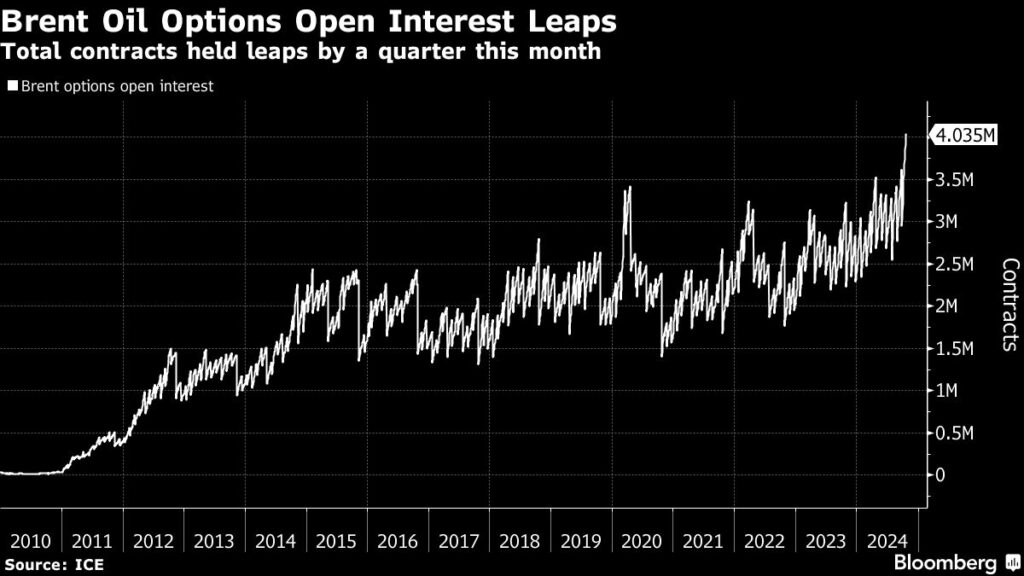Oil prices have experienced a rebound after a brief dip, driven by ongoing tensions in the Middle East and uncertainty regarding market dynamics as 2025 approaches. As of now, Brent crude is nearing $76 per barrel while West Texas Intermediate holds close to $72. The backdrop for this increase includes U.S. Secretary of State Antony Blinken’s diplomatic discussions with significant regional leaders such as Saudi Crown Prince Mohammed bin Salman in Riyadh. Blinken’s diplomatic efforts aim to facilitate a cease-fire in the ongoing conflicts in Gaza and Lebanon. Compounding these tensions is the aggressive stance taken by Israel against Iran following a missile attack earlier in the month. The Middle East, a critical region that accounts for approximately one-third of global oil supplies, has become a focal point for traders who are closely monitoring supply risk and fluctuating demand levels.
This month has seen considerable volatility in oil trading, primarily as traders digest the geopolitical situation and its implications on supply stability. While demand has been tepid in China—the world’s largest oil importer, which is attempting to stimulate its economy—there are encouraging signs from the U.S., where refinery processing activity has reached a six-year seasonal high. The disparities in demand patterns between these two major economies have led to complex market sentiments. Furthermore, the looming U.S. elections are adding another layer of uncertainty, with traders carefully observing how the political climate impacts economic policies that could influence oil demand. According to Vandana Hari, founder of Vanda Insights, both Middle Eastern tensions and broader economic outlooks are critical factors affecting oil pricing, although neither is currently indicating a strong directional shift.
In response to the potential for sudden price fluctuations caused by geopolitical unrest, traders have positioned themselves by holding an unprecedented number of options contracts. This week, open interest in Brent options exceeded 4 million contracts for the first time, which translates to an exposure of about 4 billion barrels. This heightened level of activity indicates that market participants are bracing for potential supply disruptions that could arise from ongoing Middle Eastern instability. The previous midweek sell-off in crude oil, where Brent experienced over a 1% decline, was prompted by reports of a significant increase in U.S. inventories, which swelled by more than 5 million barrels.
In terms of supply dynamics, the outlook suggests a looming oversupply scenario moving into 2025. Analysts point to the significant rise in U.S. oil production as a primary factor that could disrupt global balances, indicating a potential glut in the market. The International Energy Agency has highlighted that spare capacity within the OPEC+ alliance is nearing record levels, exacerbating worries over supply management. This increase in production capacity alongside fluctuating demand could lead to a prolonged period of market imbalance, compelling traders to navigate a challenging landscape filled with uncertainties.
The mixed signals in the global oil market present a complex tapestry of factors affecting traders’ strategies. While protective measures such as increased option contracts indicate concern over potential spikes, the weaker demand signals from certain key markets like China may temper excessive price rises. Market participants are now left to anticipate how these geopolitical developments, especially in the Middle East, will unfold and significantly influence supply and demand scenarios in the forthcoming months.
In conclusion, the oil market is in a state of cautious observation amid ongoing geopolitical tensions and mixed demand indicators. As stakeholders monitor the actions of influential players in the Middle East and assess the potential impacts of U.S. production increases, the overall trading sentiment remains somewhat rangebound. Until clearer signals emerge from both demand and geopolitical fronts, traders may continue to adopt a cautious but proactive stance, with a heightened focus on risk management strategies, such as the use of options to hedge against unexpected market fluctuations. As the situation evolves, all eyes will be on how major economies respond to these intertwined challenges and whether stability can be achieved amid the complexities of international relations and market dynamics.

